Leaders and their whānau from across the central North Island came together for a two-day E Tū Whānau wānanga, sharing and learning about the significance of their roles in rugby league as whānau and community leaders.
 A sport well known for its hard hits on the field, rugby league has often been stereotyped as a thugs’ game where the side-line is as rough off the field as it is on the field. But not this group of League leaders, 63 of whom turned out for the wānanga at Lake Rotoiti’s Ruato Marae over Waitangi weekend, 2018.
A sport well known for its hard hits on the field, rugby league has often been stereotyped as a thugs’ game where the side-line is as rough off the field as it is on the field. But not this group of League leaders, 63 of whom turned out for the wānanga at Lake Rotoiti’s Ruato Marae over Waitangi weekend, 2018.
E Tū Whānau’s Sash Stosic who facilitated the wānanga brings with him 11 years in rugby league administration so he knows the game and its people inside out. He knows there are many benefits of sport but his real passion lies in supporting people and whānau to reach their potential – particularly Māori.

Sash Stosic, E Tū Whānau kaimahi
This is the second wānanga for the Rugby League fraternity in the Waikato and Bay of Plenty. The first was held at Opureora Marae on Matakana Island in January 2016. Based on the knowledge that ‘it takes a village to raise a child’, Sash sees it as critical that leadership is developed at a whānau level.
“Leadership should not be set aside just for individuals if we are to all fulfil our potential”, says Sash. “For our second wānanga, we came back together under the guidance of the whakataukī, ‘Whītiki te tangata, mārama te kitea!’ which means, when people come together, the light will shine and things become clear.
“It is a strong Māori belief that every person has the potential to be great, and as we come together as a collective we are all strengthened.”
Kahukura, community leaders
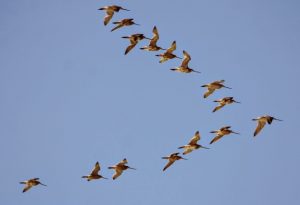
The flying ‘V’ formation of the Kuaka
The wānanga looked at the role of the the Kahukura, or leaders in the community. Kahukura is the name given to the lead bird at the head of the flying ‘V’ formation of a flock of Kuaka or Bar-tailed Godwit. Māori studied and understood the complexities of the Kuaka’s long-haul flight from the far reaches of the northern hemisphere, traveling almost 12,000km from Alaska to feed on the shores of Aotearoa.
“The Kahukura plays a significant leadership role within a flock of Kuaka. It leads from the front, cleaving the air, creating an uplift of air making it easier for the rest to follow.”
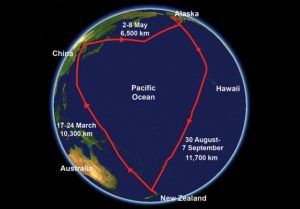
The 29,000km flight path of the Kuaka’s annual migration journey to New Zealand
“The example of Kahukura exists in everyday life, and the marae and the way it functions is a great example.
“We’ve got our kai karanga, kai kōrero, kai mahi and each person’s role within the marae has its part to play. One can’t work without the other,” explains Sash.
Collective action
The wānanga provided whānau with lots of opportunities to work together, and through that to understand the importance and power of collective action. One activity was a journey on two traditional Māori waka, one of which coincidentally is named Kahukura.
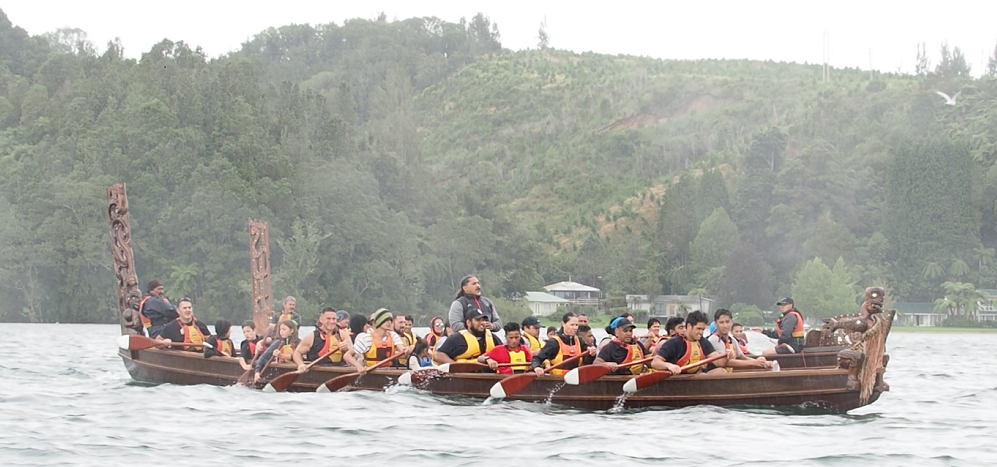
Whānau out on the waka. Kahukura in the foreground and Tieke in behind
Seventeen year old Leia Christy loved the waka experience.
“We all learnt to be in sync together, paddling at the same time. We had a leader, who I liken to my parents who led us along our path and you can get a lot from the small and simple things in life.”
Vicky Baker-Taingahue loved paddling with her whānau.
“Going out on the waka was one of the highlights of the weekend. I really learnt what it was like to work as a team. If we didn’t work together, we wouldn’t get anywhere and I thoroughly enjoyed it. It was awesome to do it alongside my whānau.”
New insight
Although many of the whānau who attended were familiar with the E Tū Whānau kaupapa, fewer knew about the Kahukura leadership model. Sash said there was a lot of learning and some thoughtful insights and appreciation of the way they live their lives.
Father of four, Baz Paama gained a lot from the experience. “Coming here and listening to others and listening to the things that we’ve been taught, has brought a lot of clarity to me…Things that are most valuable are the things that come for free.”
Derek Tarawa couldn’t speak highly enough of the opportunity to attend the wānanga. “It’s been a wonderful experience. I would recommend this to anybody.”

Rob Taingahue said it was awesome to spend this time with his whānau
For club and representative coach, Rob Taingahue, it was a first for him to have his whānau involved in a personal development activity with other rugby league people.
“This is the first time we’ve done a wānanga together. It’s always been myself taking off and doing our coaching clinics and stuff like that, so to have my whānau here, my wife especially, that was awesome.”
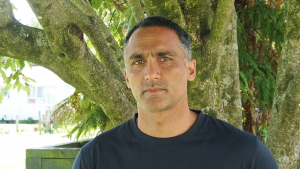
Brad Fleming – “You’re born with mana…it’s about finding the mana within…”
Mana
Brad Fleming believes leadership is about enhancing the mana of others. “You’re born with mana, you don’t earn the mana, and it’s about finding the mana within and bringing it out and giving strength to our youth and the people we work with.”
Melanie Bennett is Upper Central Zone Rugby League general manager. She said the weekend exceeded her expectations and it’s made her want more in all aspects of her life and “to do what is right and what is tika, i ngā mea katoa”.
E Tū Whānau values
“The six values E Tū Whānau can be reciprocated anywhere, in any walk of life… It’s about keeping people on the straight and narrow, utilising those values, providing them with a pathway but most importantly providing them with self-awareness of who they are, where they come from, and holding strong and fast to their identity,” says Sash.
“People of all ages came together as their separate little whānau but left as a large flock of Kahukura.”
“Whānau left with ideas, strategies and tools that build on their understanding of how leadership can guide their decisions at home and when working within their communities.”
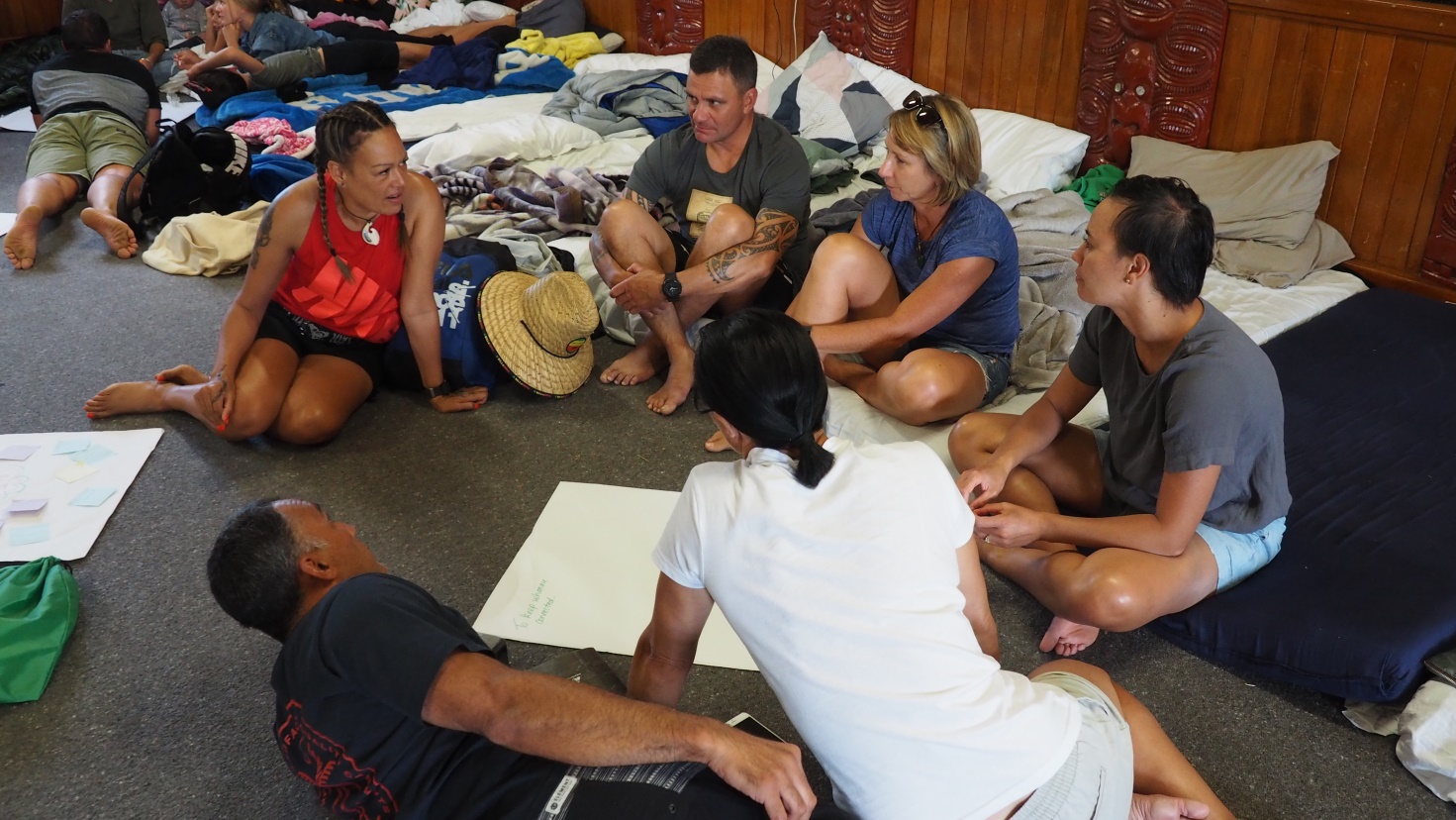
The whakataukī for this wānanga is, ‘Whītiki te tangata, mārama te kitea!’ – when people come together, the light will shine and things become clear.

Kahukura and their whānau outside ‘Nga Pumanawa e Waru o Te Arawa’ wharenui at Ruato Marae
